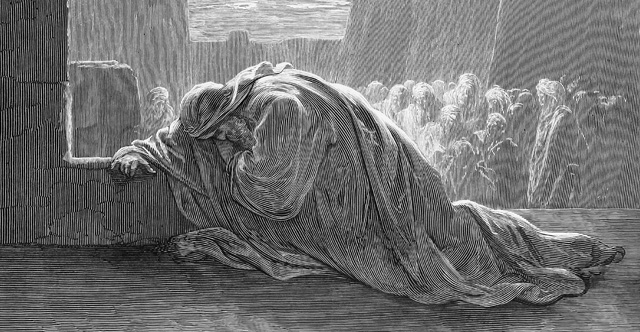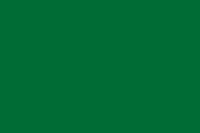
1
T
hen he made a brass altar. It was ten steps long, and ten steps wide, and three times taller than a man.
I hanga ano e ia te aata parahi, e rua tekau whatianga te roa, e rua tekau whatianga te whanui, kotahi tekau hoki whatianga te tiketike.
2
H
e melted brass and made a pool. It was round, and five long steps from one side to the other. It was as tall as a man can raise his hand. And it took fifteen steps to walk around it.
I hanga ano te moana, he mea whakarewa, tekau nga whatianga o tetahi pareparenga ki tetahi pareparenga, he mea porotaka, e rima whatianga tona tiketike: e toru tekau whatianga o te aho i paea ai.
3
T
here were objects that looked like oxen under the pool and all around it, (ten long steps around it). The oxen were in two rows, and were made of one piece.
I raro ko etahi mea e rite ana ki te kau, a taka noa, kotahi tekau nga whatianga, i te taha o te moana, a taka noa. E rua rarangi o nga kau i whakarewaina i tona whakarewanga.
4
T
he pool was put on the twelve oxen. Three had their faces toward the north, three toward the west, three toward the south, and three toward the east. The pool was put on top of them. All their tails were toward the center.
I runga i nga kau kotahi tekau ma rua taua moana e tu ana, e toru e anga ana ki te raki, e toru e anga ana ki te hauauru, e toru e anga ana ki te tonga, e toru e anga ana ki te rawhiti: i runga hoki ko te moana; i anga whakaroto a muri katoa o ra tou.
5
T
he brass of the pool was as thick as a hand is wide. Its round top was made like the top of a cup, like a lily flower. It could hold 22, 000 bottles of water.
He whanuitanga ringa te matotoru; rite tonu te hanganga o tona niao ki to te niao o te kapu, ki te puawai rengarenga; e toru mano pati o roto o taua moana ina ki.
6
H
e made ten pots in which to wash. He put five on the right side and five on the left side. They were to wash what was used for the burnt gifts. But the pool was for the religious leaders to wash in.
A i hanga e ia etahi oko koroi kotahi tekau, a whakaturia ana e rima ki matau, e rima ki maui, hei horoinga. Ko nga mea i whakaekea hei tahunga tinana i horoia ki reira; ko te moana ia hei horoinga mo nga tohunga.
7
T
hen he made ten gold lamp-stands, as was shown in the plan. He put them in the house of God, five on the right side and five on the left.
Na i hanga e ia nga turanga rama koura kotahi tekau, ki te ahau i whakaritea mo era mea; whakaturia ana e ia ki te temepara; e rima ki matau, e rima ki maui.
8
H
e made ten tables and put them in the house of God. Five were on the right side and five on the left. And he made 100 deep dishes out of gold.
I hanga ano e ia nga tepu kotahi tekau, whakaturia ana ki te temepara, e rima ki matau, e rima ki maui. I hanga ano nga peihana koura kotahi rau.
9
T
hen he made the open space of the religious leaders, the large open space, and the doors for the open space. And he covered their doors with brass.
I hanga ano e ia te marae o nga tohunga, me te marae nui, me nga tatau mo te marae; i whakakikoruatia nga tatau o aua wahi ki te parahi.
10
H
e set the pool at the south-east corner of the house.
Na, ko te moana, whakatakotoria ana ki matau o te pito ki te rawhiti, whaka te tonga.
11
T
hen Huram made the pails, the tools for digging, and the pots. So Huram finished the work of God’s house that he did for King Solomon.
I hanga ano e Hurama nga pata, nga koko pungarehu, nga peihana. Na kua oti i a Hurama te mahi i mahia e ia ma Kingi Horomona i te whare o te Atua;
12
H
e finished making the two pillars, the pots, and the two pieces on top of the pillars. He finished the two networks to cover the two pots of the pieces on top of the pillars.
Nga pou e rua, nga peihana, nga whakapaipai e rua i te pito ki runga o nga pou e rua, nga kupenga e rua hei kopaki mo nga peihana e rua o nga whakapaipai i te pito ki runga o nga pou;
13
H
e finished the 400 pomegranates for the two networks. There were two rows of pomegranates for each network, to cover the two pots of the pieces on top of the pillars.
Me nga pamekaranete e wha rau mo nga kupenga e rua; e rua rarangi pamekaranete mo tetahi kupenga hei kopaki mo nga peihana e rua o nga whakapaipai i nga pou.
14
H
e made the stands and he made the pots on the stands.
I hanga ano e ia nga turanga; i hanga ano nga oko horoi i runga i nga turanga.
15
H
e made the one pool with the twelve oxen under it.
Kotahi te moana, tekau ma rua nga kau i raro i taua moana.
16
H
uram-abi made the pails, the tools for digging, the meat-hooks, and all their objects. He made them of shining brass for King Solomon for the house of the Lord.
Ko nga pata, me nga koko pungarehu, me nga marau, me o ratou mea katoa, i hanga era e tona papa, e Hurama, ma Kingi Horomona mo te whare o Ihowa, kanapa tonu te parahi.
17
T
he king had them made on the plain of the Jordan, in the clay ground between Succoth and Zeredah.
I whakarewaina aua mea e te kingi ki te mania o Horano, ki te wahi onematua i te takiwa o Hukota, o Tereata.
18
S
olomon made so many of these objects that the weight of the brass could not be known.
Heoi hanga ana e Horomona enei oko katoa, he tini noa iho; kihai hoki i kitea te taimaha o te parahi.
19
S
olomon made all the things that were in the house of God. He made the gold altar, and the tables for the holy bread.
I hanga ano e Horomona nga oko katoa mo te whare o te Atua, me te aata koura, me nga tepu hei takotoranga mo te taro aroaro;
20
H
e made the lamp-stands with their lamps of pure gold, to burn in front of the most holy place in the way given.
Me nga turanga rama, me o reira rama e tahuna nei ki mua i te ahurewa, ko te tikanga hoki tena; he mea parakore te koura;
21
H
e made the flowers, the lamps and their objects of pure gold.
Ko nga puawai, ko nga rama, ko nga kokopi, he mea koura, he koura pai rawa;
22
H
e made the things to put out the lamps, the pots and the fire-holders of pure gold. And he made the front of the house, its inside doors for the most holy place, and the doors of the holy place, all of gold.
Me nga kuku, me nga peihana, me nga koko, me nga tahu kakara, he parakore te koura; me te tapokoranga ki te whare, me ona tatau o roto ki te wahi tino tapu, me nga tatau o te whare, ara o te temepara, he koura.
 English
English
 Albanian - Shqip
Albanian - Shqip
 Arabic - العربية
Arabic - العربية
 Bulgarian - Български
Bulgarian - Български
 Chinese - 汉语
Chinese - 汉语
 English - English
English - English
 French - Français
French - Français
 German - Deutsch
German - Deutsch
 Italian - Italiano
Italian - Italiano
 Māori - Te Reo Māori
Māori - Te Reo Māori
 Portuguese - Português
Portuguese - Português
 Romanian - Română
Romanian - Română
 Russian - Русский
Russian - Русский
 Somali - Af Soomaali
Somali - Af Soomaali
 Spanish - Español
Spanish - Español
 Ukrainian - Українська
Ukrainian - Українська
 Vietnamese - Tiêng Viêt
Vietnamese - Tiêng Viêt
 Māori
Māori
 Albanian - Shqip
Albanian - Shqip
 Arabic - العربية
Arabic - العربية
 Bulgarian - Български
Bulgarian - Български
 Chinese - 汉语
Chinese - 汉语
 English - English
English - English
 French - Français
French - Français
 German - Deutsch
German - Deutsch
 Italian - Italiano
Italian - Italiano
 Māori - Te Reo Māori
Māori - Te Reo Māori
 Portuguese - Português
Portuguese - Português
 Romanian - Română
Romanian - Română
 Russian - Русский
Russian - Русский
 Somali - Af Soomaali
Somali - Af Soomaali
 Spanish - Español
Spanish - Español
 Ukrainian - Українська
Ukrainian - Українська
 Vietnamese - Tiêng Viêt
Vietnamese - Tiêng Viêt
